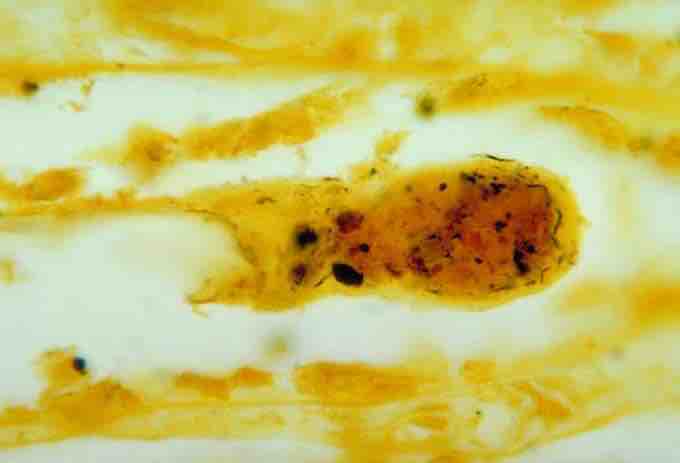Symptoms of Leptospirosis
Leptospirosis (also known as Weil's Syndrome, canicola fever, canefield fever, nanukayami fever, 7-day fever, Rat Catcher's Yellows, Fort Bragg fever, black jaundice, and Pretibial fever) is caused by bacteria of the genus Leptospira, and affects humans as well as other animals. Symptoms can range from none to mild such as headaches, muscle pains, and fevers; to severe with bleeding from the lungs or meningitis. If the infection causes the person to turn yellow, have kidney failure and bleeding it is then known as Weil's disease. If the infection causes lots of bleeding from the lungs it is known as severe pulmonary haemorrhage syndrome.
Leptospira bactera that cause Leptospirosis
Scanning electron micrograph of a number of Leptospira sp. bacteria atop a 0.1 µm polycarbonate filter.
Cause and Transmission of Leptospirosis
Leptospirosis is among the world's most common diseases transmitted to people from animals. The infection is commonly transmitted to humans by allowing water that has been contaminated by animal urine to come in contact with unhealed breaks in the skin, eyes, or mucous membranes. Outside of tropical areas, leptospirosis cases have a relatively distinct seasonality, with most cases occurring in spring and autumn.
Leptospirosis is caused by a spirochaete bacterium called Leptospira spp. There are at least five serotypes of importance in the United States and Canada, all of which cause disease in dogs (Icterohaemorrhagiae, Canicola, Pomona, Grippotyphosa, and Bratislava).There are other (less common) infectious strains as well. Leptospirosis is transmitted by the urine of an infected animal and is contagious as long as it is still moist. Although rats, mice, and moles are important primary hosts, a wide range of other mammals (including dogs, deer, rabbits, hedgehogs, cows, sheep, raccoons, opossums, skunks, and certain marine mammals) are able to carry and transmit the disease as secondary hosts. Dogs may lick the urine of an infected animal off the grass or soil or drink from an infected puddle.

Leptospirosis in kidney
Photomicrograph of kidney tissue, using a silver staining technique, revealing the presence of Leptospira bacteria.
There have been reports of "house dogs" contracting leptospirosis from licking the urine of infected mice that enter the house. The type of habitats most likely to carry infectious bacteria are muddy riverbanks, ditches, gullies, and muddy livestock-rearing areas where there is regular passage of either wild or farm mammals. There is a direct correlation between the amount of rainfall and the incidence of leptospirosis, making it seasonal in temperate climates and year-round in tropical climates. Leptospirosis is also transmitted by the semen of infected animals. Humans become infected through contact with water, food, or soil containing urine from these infected animals. This may result from swallowing contaminated food and water or through skin contact. The disease is not known to be spread from person to person, and cases of bacterial dissemination in convalescence are extremely rare in humans. Leptospirosis is common among water-sport enthusiasts in specific areas, as prolonged immersion in water is known to promote the entry of the bacteria. Surfers and whitewater paddlers are at especially high risk in areas that have been shown to contain the bacteria, and can contract the disease by swallowing contaminated water, splashing contaminated water into their eyes or nose, or exposing open wounds to infected water.